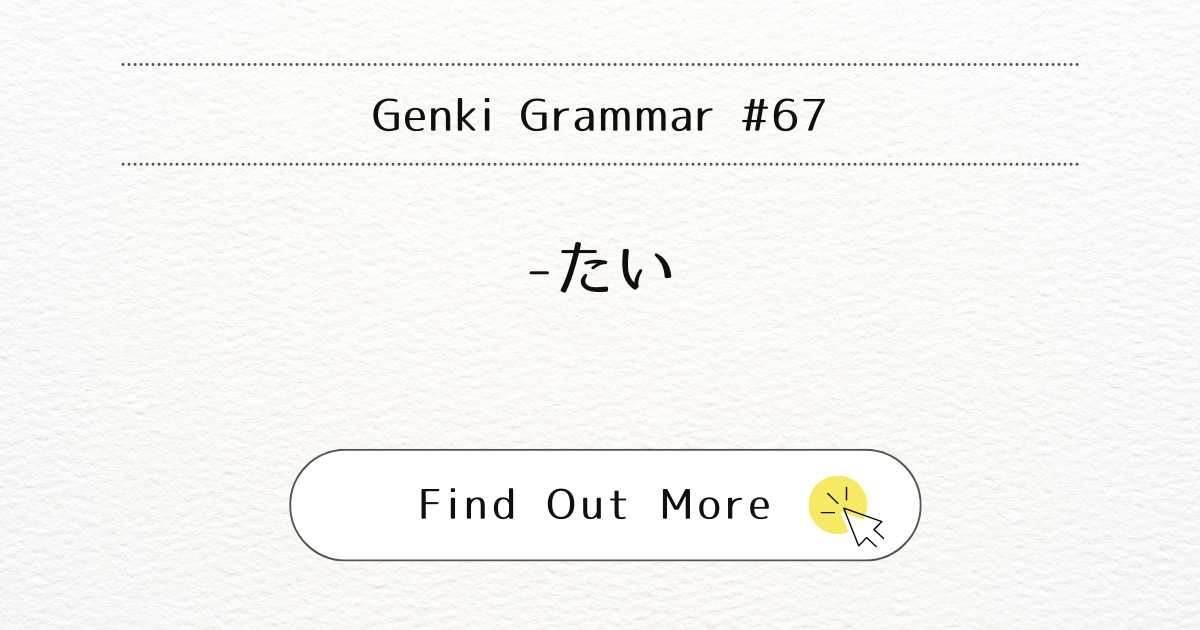
Introduction
In this blog post, we will learn how to use the verb stem + たい (tai) to describe your hopes or wants in Japanese. This structure is useful for expressing what you want to do.
What It Means
You can use a verb stem (the verb form that goes before ます) + たいです to describe your desire or what you want to do.
When You Use It
Use this structure when you want to express your own desires or intentions. This is typically used in casual and polite conversations when talking about things you want to do in the future.
Examples
Verb stem + たいです: I want to do…
- 今週の土曜日、映画を見たいです。or. 映画が見たいです。
- (Konshuu no doyoubi, eiga o mitai desu. or eiga ga mitai desu)
- I want to see a film this Saturday.
- いつか韓国に行きたいです。
- (Itsuka Kankoku ni ikitai desu.)
- I want to go to Korea.
In the first example, a verb that usually takes the particle を can have either the particle を or が when followed by たい. Particles other than を remain the same, as shown in the second example, which uses に.
たい conjugates as an い-adjective. Here are examples of negative and past tense たい sentences:
- あの人には会いたくないです。
- (Ano hito ni wa aitakunai desu.)
- I don’t want to see that person.
- 飲み物が買いたかったから、コンビニに行きました。
- (Nomimono ga kaitakatta kara, konbini ni ikimashita.)
- I went to a convenience store because I wanted to buy a beverage.
If your wish is something you have had for some time, you can use たいと思っています instead of たいです.
- 留学したいと思っています。
- (Ryuugaku shitai to omotteimasu.)
- I’ve wanted to study abroad.
Note
You usually do not use たいです to describe what someone else wants. Instead, you can report their wishes using quotes, observations, or guesses.
- Quotations: Use と言っていました (to itteimashita) to quote what someone said.
- Example: マリアさんはチベットに行きたいと言っていました。
- (Maria-san wa Chibetto ni ikitai to itteimashita.)
- Maria said she wanted to go to Tibet.
- Example: マリアさんはチベットに行きたいと言っていました。
- Observations: Use たがっている (tagatteiru) to describe what you think someone wants based on their behavior.
- Example: マリアさんは着物を着たがっています。
- (Maria-san wa kimono o kitagatteimasu.)
- (It seems) Maria wants to wear a kimono.
- Example: マリアさんは着物を着たがっています。
The verb たがっている comes from たがる (tagaru) and means “I think that she wants to,” based on her actions. If the verb takes the particle を (wo), it remains を with たがっている.
Conclusion
Using verb stem + たい is a simple and effective way to express what you want to do in Japanese. Remember to use たがっている when talking about the desires of others based on your observations.



